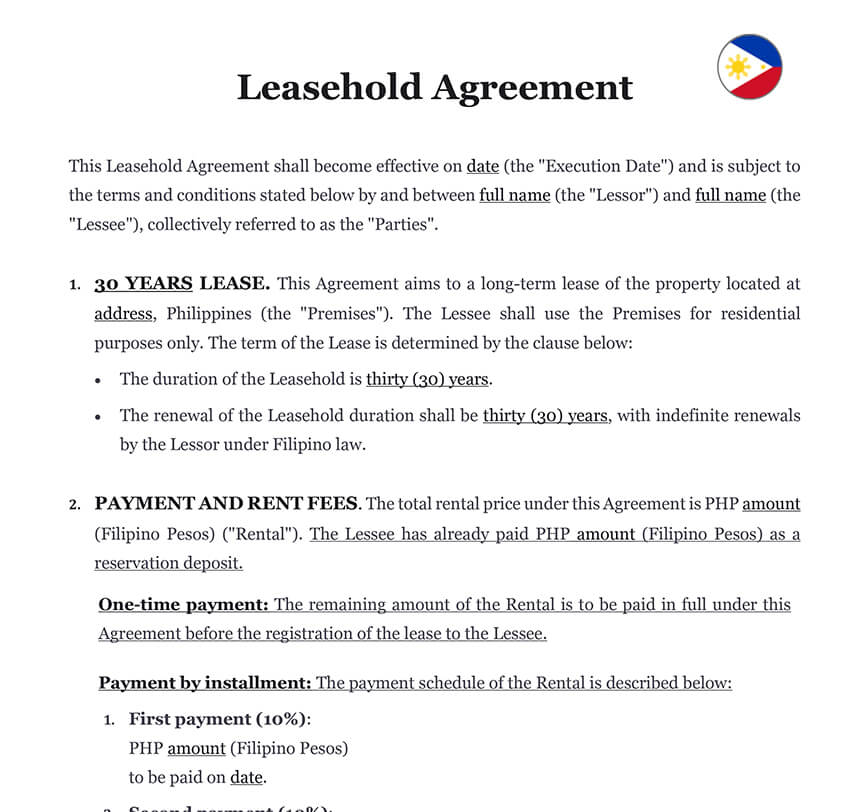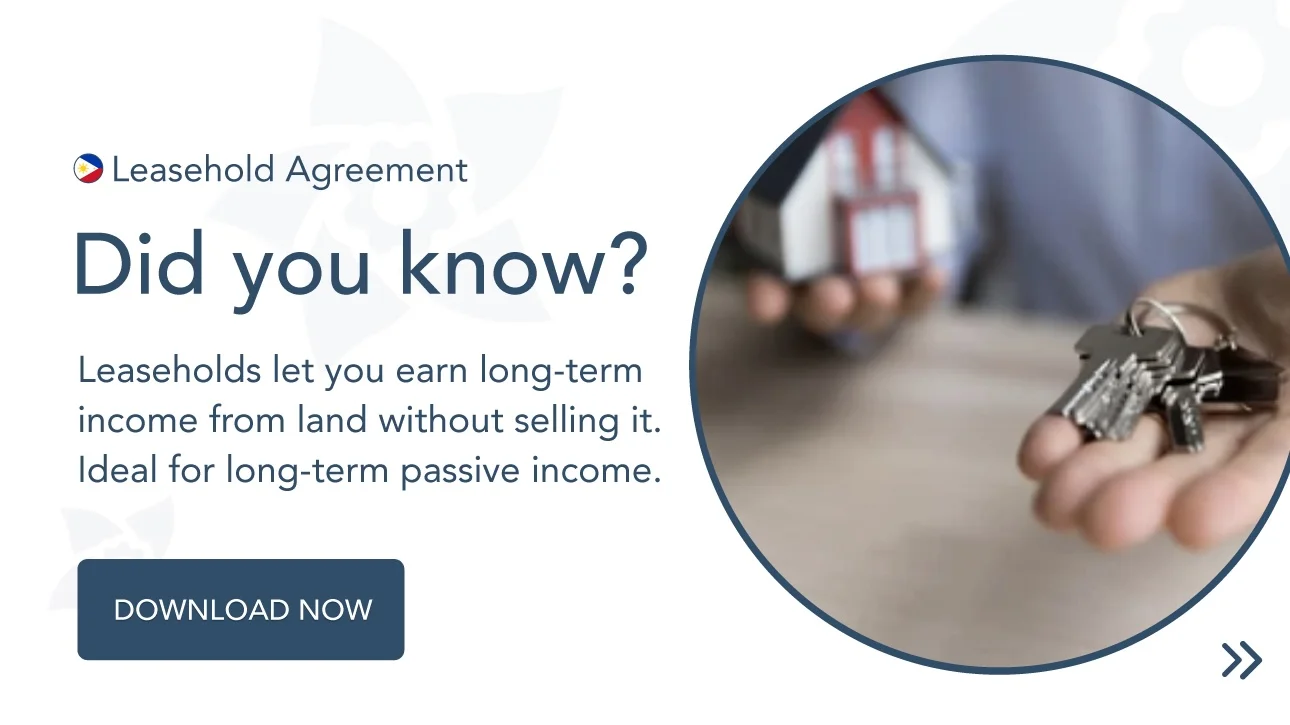Ready to use legal template
Drafted by experienced lawyers
Compliant with Filipino law
Ready to use legal template
Drafted by lawyers
Compliant with Filipino law
Home › Rent your property › Leasehold
Learn more about Leasehold Agreement in Philippines
Leased homes are popular in the Philippines. It is critical to grasp the distinction between leasing and renting property, especially if you intend to own property in the future. Isn’t it the same thing? One of the most significant differences between a Leasehold property and a conventional lease as we know it is the lease duration. The premise is the same, but leasehold titles are for significantly longer periods of time, ranging from 30 to 90 years, whereas leases are for 6 months, a year, month to month, and so on. A ground lease protects both the landlord and the tenant throughout a long-term lease in the Philippines. You can set the length of the tenancy understanding that the agreement imposes more obligations and responsibilities on both parties over the long term than a Lease Agreement.
Table of contents
What is a Leasehold property?
Leaseholds are fairly widespread in other countries, particularly in Europe, where the names “Leasehold” and “Freehold” may appear on property listings. A freehold arrangement is comparable to a conventional house purchase in America; after the debt is paid off, you own the property and the land. When you sign a Leasehold Agreement, it’s as if you own the house for a set amount of time but never own the land it’s constructed on—and the house eventually reverts back to the land owner.
How a Leasehold property works?
The property owner (also known as the freeholder) provides the leaseholder the right to dwell on the property for a set period of time in leasehold or freehold agreements. The lessee will have to make a down payment to keep his part of the contract, but it will be significantly less than the customary 20% down payment necessary for a regular house purchase.
Following that, the leaseholder pays rent (also known as ground rent) every month, just like any other renter.
Leaseholders have one distinct benefit over more temporary tenants in that they may have their way with home upgrades since they commit to renting a house for such a lengthy period of time.
Leaseholders can remodel, create expansions, or even construct entirely new structures on the site (and rent those units out to tenants of their own choosing).
Unless the contract states otherwise or a longer lease is arranged, the property or land reverts to the owner, improvements and all, at the conclusion of the lease.
Leaseholds are more prevalent for commercial property, where malls and other enterprises may be established, but they are also available for residential reasons, such as houses and condominiums.
What difference between Leasehold and Freehold?
When you own a property’s freehold, you own both the building and the land on which it stands. On the land register, you are described as the freeholder, and you own the ‘title absolute.’ Houses, as opposed to flats, have generally been subject to freehold ownership.
The following are some of the benefits of holding a freehold:
| ➤ You are not obligated to pay ground rent, which may be rather costly. |
| ➤ You might not have to pay service or maintenance fees, but double-check to be sure. |
| ➤ You are not reliant on a freeholder to maintain the building. |
| ➤ You have authority over the building's outside maintenance. |
| ➤ There is no need for you to be concerned about lease terms. |





